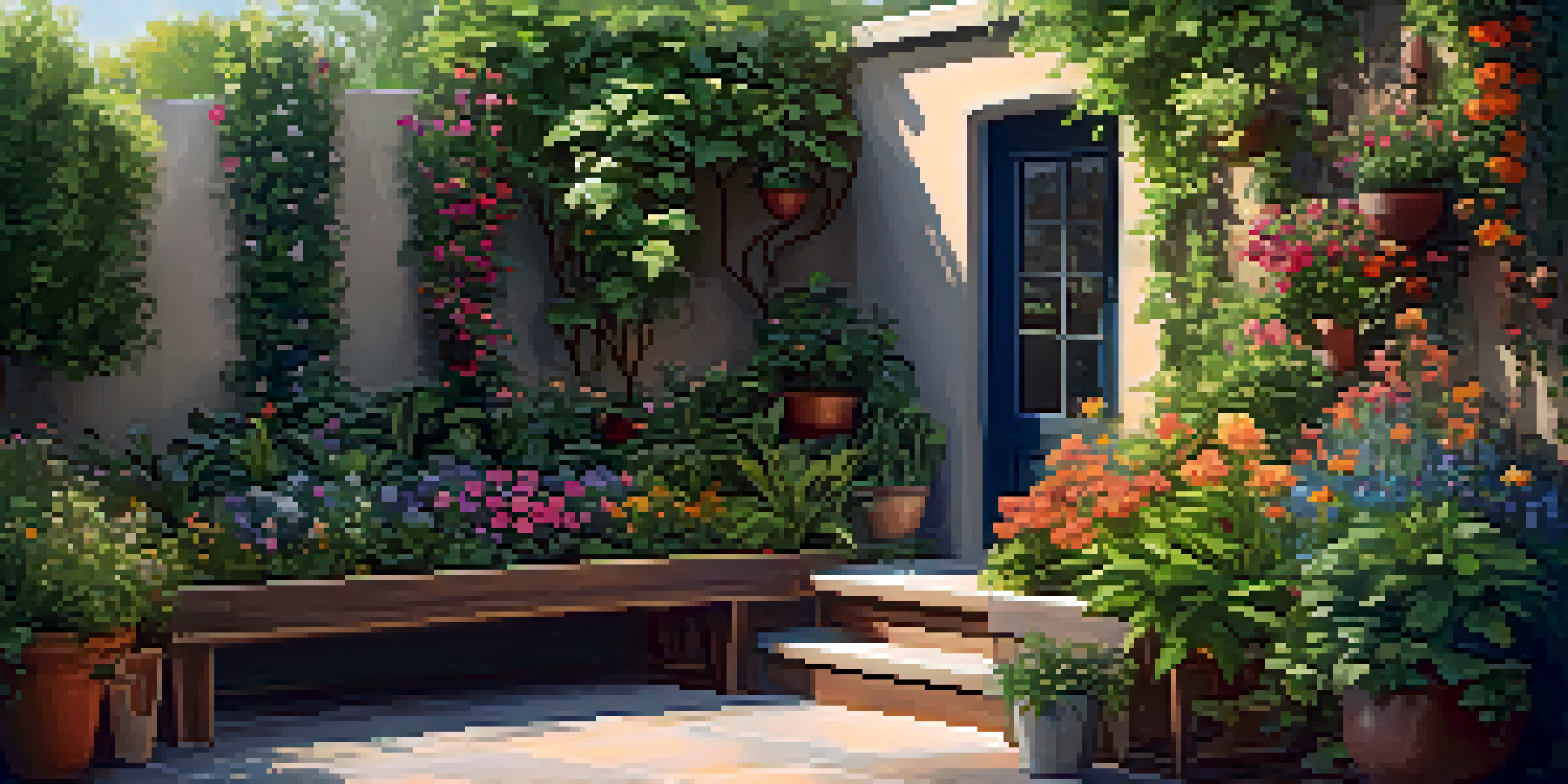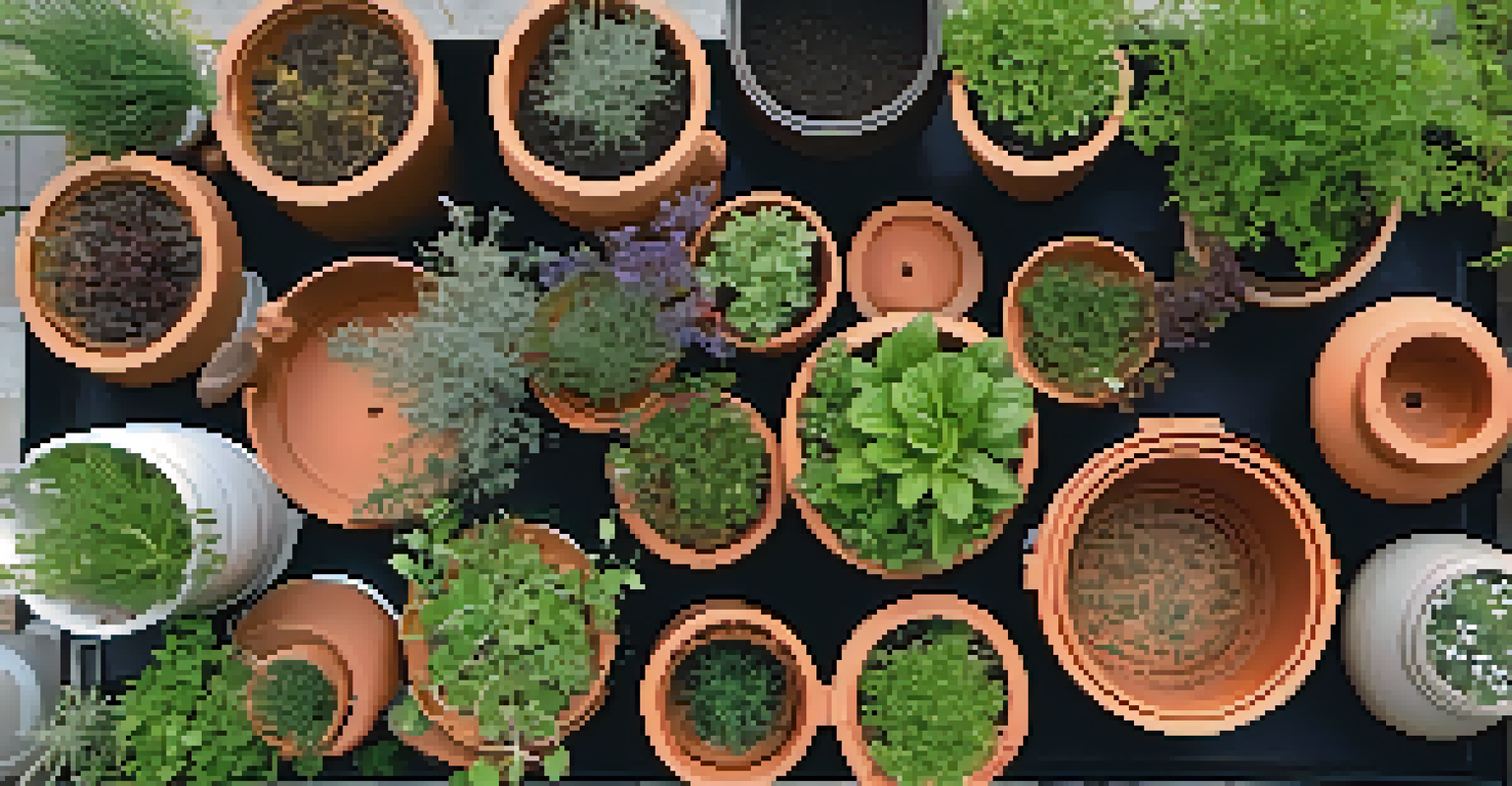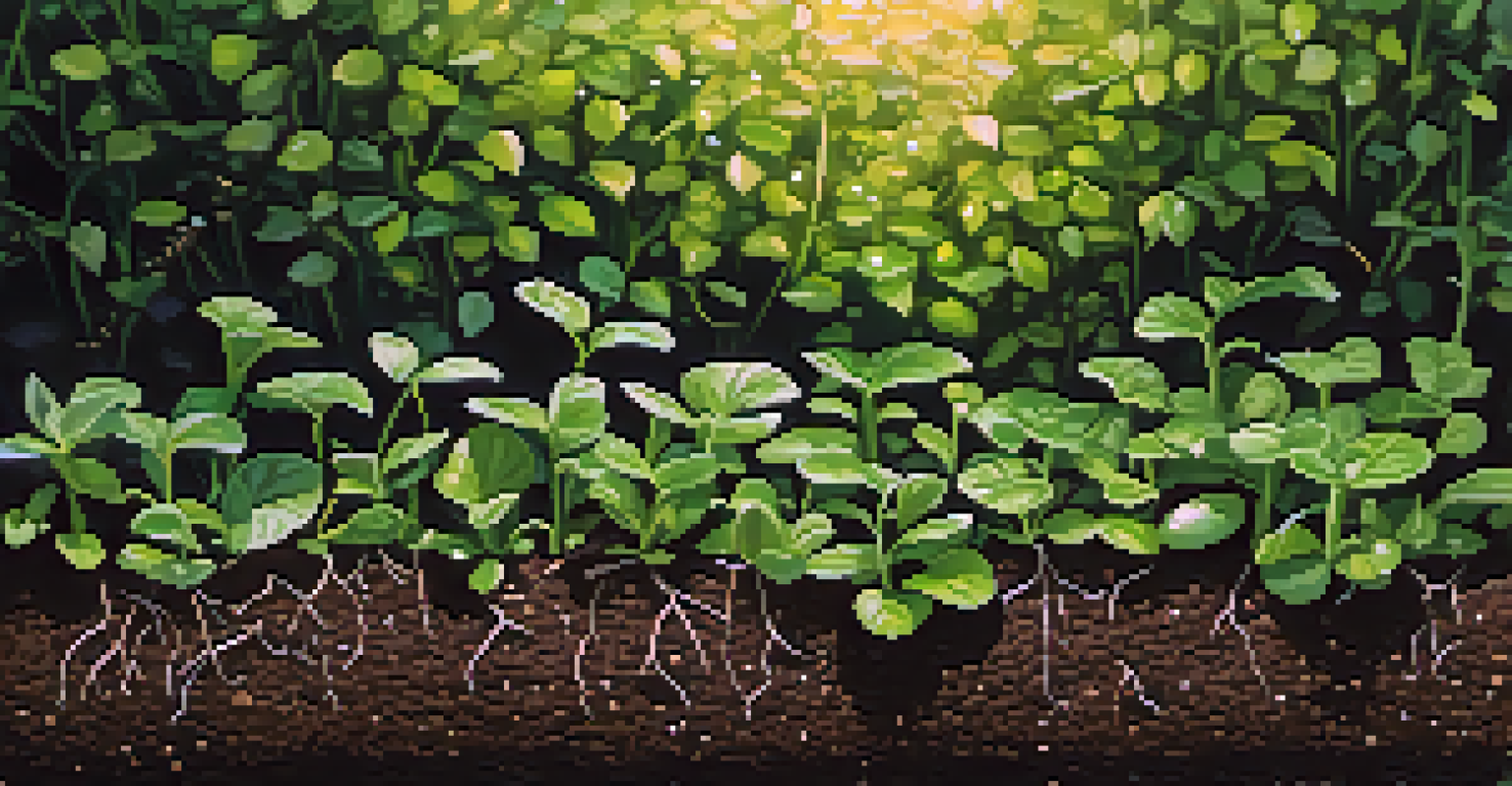Seasonal Gardening Tips for Small Backyard Spaces

Start with a Plan: Map Your Garden Layout
Before you dig into your gardening adventure, take a moment to sketch a rough layout of your space. Planning helps you visualize where each plant will go, ensuring you make the most of every inch. Consider factors like sunlight, shade, and wind directions, as these will impact your plants' growth.
Gardening adds years to your life and life to your years.
For small spaces, vertical gardening is a game changer. You can use trellises, wall planters, or even hanging pots to add height and interest without taking up too much ground space. Think of it as a way to add a third dimension to your garden, allowing you to create a lush environment without overcrowding.
Don't forget to choose the right plants for your layout. Some plants thrive in small spaces, like herbs and dwarf varieties of vegetables. By selecting the right greenery, you can cultivate a thriving garden that feels both abundant and manageable, perfect for your cozy backyard.
Choosing the Right Plants for Each Season
Every season brings its own set of opportunities and challenges for gardeners. In spring, think about planting quick-growing vegetables like radishes and lettuce, which can be harvested before summer crops take over. This way, you can enjoy multiple harvests in one growing season.

During the summer months, consider heat-tolerant plants that can withstand the sun's intensity. Tomatoes, peppers, and basil not only thrive in warm weather but also complement each other well in recipes. They also create a vibrant, colorful garden that’s pleasing to the eye.
Plan Your Garden for Success
Creating a layout before planting helps you optimize space and choose the right plants based on sunlight and shade.
As autumn approaches, it's time to think about planting hardy vegetables such as kale and Brussels sprouts. These plants actually taste better after a frost, making them a delicious addition to your fall meals. Plus, you can extend your gardening season while enjoying the crisp air and beautiful fall colors.
Maximizing Space with Container Gardening
Container gardening is a fantastic solution for small backyards, allowing you to grow a variety of plants without needing a traditional garden bed. By using pots, you can easily move plants around to find the perfect sunlight exposure. This flexibility can lead to healthier plants and a more dynamic garden layout.
To plant a garden is to believe in tomorrow.
When selecting containers, consider their size and material. Larger pots hold more soil, which helps retain moisture, while lighter materials are easier to move. Choosing the right type of container can significantly influence the success of your garden, so think about your plants' needs.
Don’t forget about companion planting when using containers. For example, pairing herbs like basil with tomatoes in a single pot can promote growth and deter pests. This method not only maximizes your space but also enhances your garden's productivity, making it a win-win for small spaces.
Soil Health: The Foundation of Your Garden
Healthy soil is the cornerstone of a thriving garden, especially in small spaces where nutrient competition can be high. Start by testing your soil to understand its pH and nutrient levels, which will guide you in making necessary amendments. This foundational step ensures your plants have the best chance to flourish.
Adding organic matter, such as compost, can significantly improve soil structure and fertility. Compost not only enriches the soil but also promotes beneficial microorganisms that help plants grow. Think of it as a nutrient booster shot for your garden, providing essential vitamins and minerals.
Choose Seasonal Plants Wisely
Selecting appropriate plants for each season ensures continuous harvests and adds variety to your garden.
Remember to practice crop rotation and avoid planting the same type of plant in the same spot year after year. This method helps prevent pest buildup and nutrient depletion, keeping your garden healthy and productive. With good soil management, your small backyard can produce big results.
Watering Wisely: Efficient Techniques for Small Spaces
Watering is crucial for garden success, but in small spaces, it's important to do it efficiently. Consider using drip irrigation or soaker hoses to deliver water directly to the roots, minimizing waste and ensuring your plants receive the moisture they need. This method is especially useful for container gardens, where water can evaporate quickly.
Another great technique is to water deeply but less frequently. This encourages roots to grow deeper, making plants more resilient to heat and drought. Think of it as teaching your plants to be self-sufficient, helping them thrive even when you’re not around.
Additionally, consider collecting rainwater in barrels for a sustainable and cost-effective watering solution. Using natural resources not only helps the environment but also keeps your garden lush and vibrant. With mindful watering practices, you can ensure your small backyard stays healthy and flourishing throughout the seasons.
Pest Management: Keeping Your Garden Healthy
Pests can be a gardener's worst nightmare, especially in small spaces where plants are in close proximity. Start by encouraging beneficial insects, such as ladybugs and lacewings, which can help keep harmful pests at bay. Planting flowers like marigolds can attract these helpful allies, creating a balanced ecosystem in your backyard.
If you encounter pests, consider using organic pest control methods. Simple solutions like neem oil or insecticidal soap can effectively manage infestations without harming beneficial insects. This approach not only protects your plants but also aligns with eco-friendly gardening practices.
Maintain Soil and Water Health
Healthy soil and efficient watering techniques are essential for thriving plants, especially in small garden spaces.
Regular monitoring of your plants is key to early pest detection. Take time to inspect leaves and stems for signs of trouble, and address issues promptly. By staying vigilant, you can maintain a healthy garden and protect the fruits of your labor.
Seasonal Maintenance: Keep Your Garden Thriving
To ensure your small garden remains vibrant year-round, seasonal maintenance is essential. In spring, focus on weeding, mulching, and feeding your plants to give them a strong start. This proactive approach sets the tone for a successful growing season ahead.
As summer rolls in, it’s important to stay on top of watering and pest management. Regularly check for any signs of distress among your plants, and adjust your care routine as needed. This attention to detail will help you catch issues before they become serious problems.

In fall, take time to prepare your garden for winter by cleaning up debris and protecting perennials. Covering your garden beds with mulch can insulate the soil and help protect plant roots from freezing temperatures. By embracing seasonal maintenance, your garden will remain a thriving oasis, even in small spaces.